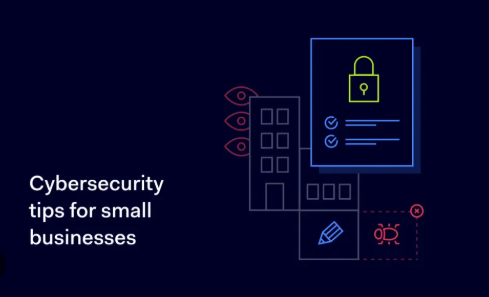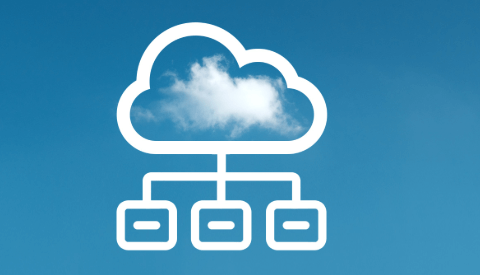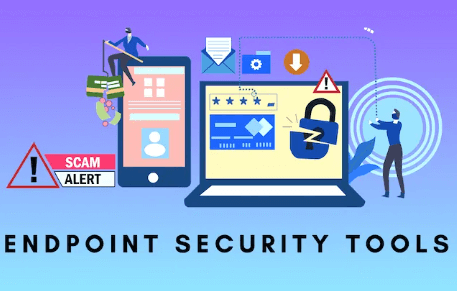Introduction
In today’s digital age, small businesses are increasingly relying on technology — from cloud software and remote collaboration tools to e-commerce platforms and email marketing. But with great convenience comes great risk: cyber threats targeting small and midsize businesses (SMBs) are on the rise. In fact, nearly half of small businesses report having faced a cyberattack recently.
Yet, many small business owners assume they are “too small” to be targeted, and as a result, neglect fundamental protections. That mindset is dangerous. Cybercriminals often view small businesses as “low-hanging fruit” — easier targets with weaker defenses.
This article offers a clear, user-friendly, and expertise-backed guide on cybersecurity tips for small businesses. You’ll learn actionable best practices, key strategies, and how to build a sustainable security posture—even on a limited budget. We’ll also address common questions small business owners ask (via “People Also Ask” style FAQs). The aim: help you prevent data breaches, protect customer trust, and ensure business continuity without overwhelming technical complexity.
Why Cybersecurity Matters for Small Businesses
Before diving into the tips, let’s understand why it’s critical:
- High stakes: Reports show that about half of small businesses suffering a breach fail within six months due to financial and reputational damage.
- More attacks: Cyberattacks on small businesses are increasing, with ransomware, phishing, and credential compromises being common vectors.
- Limited resources: Small businesses often lack dedicated IT or security teams, making it essential to adopt cost-effective and practical measures.
- Access to sensitive data: Even small companies typically handle customer data, payment information, or proprietary data. A breach can mean legal liabilities and lost trust.
- Supply chain risk: Attackers sometimes breach small vendors to gain access to larger partners. If your business is part of a supply chain, your security posture matters beyond your walls.
By improving your cybersecurity resilience, you reduce risk, comply with possible regulations, and enhance trust with customers, partners, and stakeholders.
10 Essential Cybersecurity Tips for Small Businesses
Below are practical, prioritized tips you can implement. I’ve also woven in LSI (latent semantic index) keywords like small business cybersecurity best practices, network security, employee training, risk assessment, etc., so the content is more contextually rich.
1. Conduct a Risk Assessment / Threat Audit
Start by understanding what you have to protect (data, systems, networks) and where your vulnerabilities lie. Identify which assets are mission-critical and which systems are connected to them.
Create a simple risk matrix: likelihood vs. impact. This helps prioritize which threats to mitigate first (for example, ransomware, phishing, or network intrusions).
2. Keep All Software and Systems Updated (Patch Management)
Outdated applications, CMSs, operating systems, or firmware are often exploited by attackers.
Enable auto-updates where possible, but also make sure devices like routers, printers, and IoT gadgets are regularly patched (some of these need manual updates).
3. Use Antivirus, Anti-Malware, and Endpoint Protection
Install reputable endpoint protection solutions to detect and quarantine malicious software. Ensure real-time scanning is enabled and definitions are updated regularly.
4. Enforce Strong Authentication: Multi-Factor (MFA) and Good Password Hygiene
Passwords alone are not enough. Require multi-factor authentication (MFA) on all business-critical and administrator accounts.
Pair that with strong password policies — long, unique passwords, and consider using a password manager for all employees.
5. Segment Networks and Use Firewalls
Network segmentation limits lateral movement if one device is compromised. For instance, separate guest Wi-Fi from core business systems, and isolate payment or financial systems.
Use firewalls or next-generation firewalls, intrusion detection/prevention systems, and controlled perimeters around your network.
6. Secure Remote Access and Use VPNs
If employees work remotely or access your network off-site, use a Virtual Private Network (VPN) with strong encryption. This helps protect data in transit and reduces exposure to public networks.
Ensure remote access tools (RDP, SSH, remote desktop tools) are not directly exposed to the internet. Use secure tunnels and limit access by IP or role.
7. Backup Regularly and Test Restores
Maintain regular backups of critical data, systems, and configurations. Store backups offline or offsite so they aren’t encrypted or compromised in an attack.
Equally important: test your backups by doing partial/full restores. Knowing you can restore quickly minimizes downtime and distrust.
8. Encrypt Sensitive Data (At Rest and In Transit)
Encrypt files, databases, and storage devices so that stolen data is unreadable without the decryption key.
Use SSL/TLS for web traffic, email encryption for sensitive communications, and secure file-sharing tools.
9. Employee Training, Awareness & Access Controls
Humans are often the weakest link in security. Regular cybersecurity awareness training is essential — phishing simulations, safe email habits, recognizing social engineering tactics, etc.
Apply the principle of least privilege: give employees access only to systems and data they need to do their job—not everything.
10. Develop a Cybersecurity Policy, Incident Response & Recovery Plan
Establish policies for data protection, acceptable use, remote access, device security, and vendor management.
Design an incident response plan: who will respond, how to isolate systems, communication protocols, and recovery steps. After an incident, do a root cause analysis and update your policies.
Also adopt a recognized cybersecurity framework (e.g. NIST CSF) to structure your efforts in Identify, Protect, Detect, Respond, Recover.
Additional Best Practices, Tips & Considerations (Bonus)
- Vendor / Third-Party Risk Management: Vendors often have access to parts of your systems. Assess their security posture and ensure they abide by security standards.
- Email Authentication (SPF, DKIM, DMARC): Prevent domain spoofing by adding these email protocols to your domain.
- Block Malicious Websites / DNS Filtering: Use DNS filtering or web gateways to prevent access to known malicious sites.
- Monitoring & Logging: Maintain logs, monitor network traffic and alerts, and review them regularly to detect anomalies or early signs of breach.
- Use Modern Devices / Replace Legacy Hardware: Legacy or old hardware may not support modern security patches; consider upgrading.
- Cybersecurity Insurance: As your business grows, consider insurance policies covering breach costs, legal liabilities, and recovery.
- Zero Trust Mindset: Trust no device or user by default — always verify access. This mindset helps build better resilience.
- User Behavior Analytics & Threat Intelligence: Use tools (or managed services) to detect abnormal behavior or threat indicators in your environment.
Conclusion
A small business is never too small to be targeted — cyber attackers see weaker defenses, limited resources, and lax policies as opportunities. But with a strategic, prioritized approach to cybersecurity, you can build a defense that fits your scale and budget. Start by assessing risk, patching software, enforcing strong authentication (MFA), segmenting networks, backing up data, encrypting sensitive information, and training your employees.
Pair these actions with policies, incident response plans, vendor evaluation, and continuous monitoring. Over time, security becomes part of your culture, reducing your risk of data breach, financial loss, and reputational damage. Although no system is perfectly secure, layering these defenses significantly raises the bar for attackers, making your business a harder target. Consistency, vigilance, and improvement are key.
Begin implementing just a few of these tips today — even small steps matter. Over time, those steps become core to your small business’s cybersecurity resilience and long-term success.
FAQs (People Also Ask — relevant to “cybersecurity tips for small business”)
- What are the most common cyber threats faced by small businesses?
The top threats include phishing attacks (fraudulent emails or links), ransomware, credential stuffing or brute-force attacks, malware/viruses, insider threats, and supply chain or vendor vulnerabilities. - How much should a small business invest in cybersecurity?
Investment depends on business size, data sensitivity, and risk exposure. A good rule is to prioritize high-impact controls first (patching, MFA, backups) even on tight budgets. The goal is to reduce risk, not to spend arbitrarily. - Is cybersecurity training really necessary for employees?
Absolutely. Human error is often the cause of breaches. Training employees to recognize phishing, use strong passwords, follow policies, and understand safe practices is one of your most cost-effective defenses. - Can a small business hire an external cybersecurity expert or outsource security?
Yes. Many small businesses leverage managed security service providers (MSSPs), freelance security consultants, or IT firms that include cybersecurity services. Outsourcing can be more affordable than hiring full-time staff. - What’s the first step for a small business just starting cybersecurity efforts?
Begin with a simple risk assessment: inventory your systems, data, users, and connections; identify the most critical assets; and determine where you are most vulnerable. From there, apply the most effective basic controls (patching, firewall, MFA, backups) and build up gradually.




